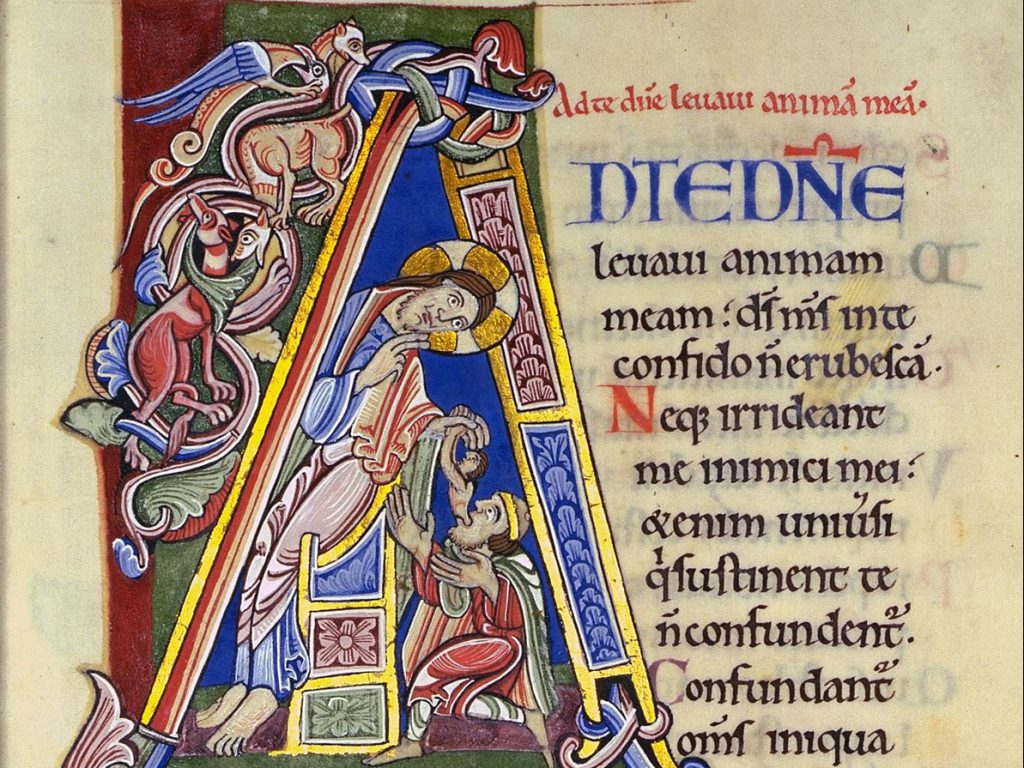Second in a series on the Book of Psalms.
What is the “Psalter”? What is a psalm? These words appear odd to readers of English, and they would appear just as strange to the ancient Hebrews who wrote the psalms. Both “psalm” and “Psalter” are English renderings of the words applied to the poems in the Greek translation of the Old Testament. Psalterion is Greek for a stringed instrument, a sort of harp; a psalmos is a song sung to the accompaniment of strings.
The Israelites, however, called these lyrics “Tehillim,” or praises. The earliest Hebrew witnesses to the Psalter call it “Sefer Tehillim,” the “Book of Praises.”
It’s clear from the texts themselves that the psalms were meant to be sung or chanted in a formal, cultic setting. Some include instructions “For the choirmaster”; and some specify the musical instruments to be used in accompaniment. Many of the psalms were integral to the liturgical worship of the Jerusalem Temple. Indeed, the “Psalter” has often been called the “Hymnal of the Second Temple,” for it was during the period of the Second Temple that the book probably reached its final form.
The First Temple, built by Solomon, the son of David, in the 10th century B.C., had been destroyed by the Babylonian invaders in 587 B.C. (see 2 Kings: 24–25). In 539 B.C., however, a decree of King Cyrus of Persia permitted the people of Judea to return to the land and rebuild the Temple. This structure, much diminished from Solomon’s original, was called the Second Temple; it would be renovated and expanded on a grand scale during the reign of the Herods (first century B.C. and first century A.D.). Thus the period of the Second Temple stretched from 515 B.C. until the utter destruction of Jerusalem by the Romans in A.D. 70.
The Temple was the natural habitat of most of the psalms. The rabbis record in the “Mishnah” that each day the Levites sang certain appointed psalms: Psalm 24 on Sunday; 48 on Monday; 82 on Tuesday; 94 on Wednesday; 81 on Thursday; 93 on Friday; and 92 on Saturday, the Sabbath. Other psalms accompanied the liturgies and sacrifices that renewed the covenant God had made with Israel, with Moses, and with the house of David. Some scholars hold that as many as half of the psalms were integral to the Temple liturgies. Others were associated with the liturgies of the synagogue, where they were probably read rather than sung. Still others found their place in the liturgies of the home, such as the Passover Seder meal, which culminated in the recitation of the Hallel Psalms (112-117 and 135).
So we see that the “Psalter” was integral to Israel’s religion, as religion was integral to Israel’s life. The psalms suffused the experience of God’s Chosen People from day to day. They defined the significant events of a lifetime, and they gave significance to otherwise minor events in the most ordinary days. Lines remained in memory, arose spontaneously as prayer, and sanctified time.

